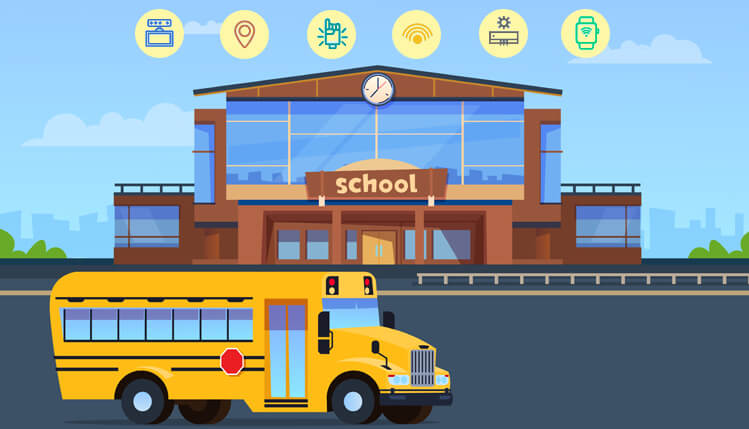
Why will COVID – 19 impact our Schools or Institutes in the long run?
Table of Contents
In the middle of an ongoing situation, it could be impossible to see the future for more than a few days. It’s like we’re walking about in a thick (and deadly) fog. We are living in extraordinary times. The epidemic of Coronavirus has flipped the planet upside down, and it seems unfamiliar and unclear.
Although all sectors have been hit by the COVID – 19 pandemic, the education industry is witnessing disturbances like never before and on a global scale – all major exams have been cancelled or delayed and almost all schools, colleges and universities have temporarily closed their doors.
While closures of educational facilities appear to have a logical explanation for implementing social distancing, prolonged closures seems to have a disproportionately negative impact.
Digital Innovations Helping Schools Hold COVID – 19
System leaders around the world – at the federal, state and district level - are addressing three main concerns relevant to the secure return of students to the classroom:
- • When are the schools expected to reopen?
- • For which segments of students and teachers should the schools be reopened?
- • What health and safety steps will schools implement in order to reopen?
There are no correct responses to these questions. Infections levels fluctuate through populations, as do the ability of healthcare services; school structure varies in scope and performance; and various cultures have distinct cultural principles that influence decision – making.
How IoT impacts education
For years we have recognized the internet as a global data network that allows us to communicate with others and exchange knowledge via computers, smartphones, tablets and other apps. As the Internet of Things grows, the spectrum of these apps is growing considerably.
In fact, smart connected devices can not only gather data with the help of sensors, but also, after processing sensor data, execute others acts with the help of actuators.
If we use IoT successfully in education we will not only enhance the mechanism of information distribution and learning, but also render educational institutions more efficient and safe.
Nonetheless, IoT allows creativity, beginning with whiteboards and connected school buses, to progress into digital signage and surveillance cameras – all of which offer real – time feedback and useful information to teachers, parents, educators and administrators.
- • Interactive whiteboards
- • Student ID cards
- • Temperature and environmental sensors
- • Security cameras with computer vision
- • Smart, efficient lighting and predictive maintenance for infrastructure
- • Smart HVAC systems
- • Automated attendance tracking systems (see ID cards)
- • Wireless door locks and lockdown protocols

Preventive measures on COVID – 19 as school reopens
- • In – Facility Monitoring : Long range RFID/Bluetooth router collects data from RFID/Bluetooth tags and sends data to cloud or local servers. Education staff monitor multiple devices data in real – time from multiple user simultaneously
- • GPS for School Buses: This technology aims to provide warnings for boarding / deboarding, incorrect bus boarding and attendance marking. Combined with a GPS monitoring device so that parents can check the accurate location of the children. This will not only ensure the safety of children but will also help parents to remain aware of their whereabouts at all times.
- • Temperature Monitoring: School should also set up control and monitoring of the health and safety status of teachers and students, such as their body temperature.
- • Social Distancing: Monitoring the density of personnel should be strictly controlled in schools to keep a safe social distance.
- • Security & Safety : With IoT technology, emergency alerts, markings and notifications for certain unknown incidents that have happened.
- • Classroom Behavior Analysis: Analyze students behavior such as inattention, irrelevant activities, and cheating on exams.
- • Data Analytics: Students get feedback on their performance in learning environments to provide personalized learning experience.
- Parents are provided with comprehensive updates on student success.
- Teachers get detailed reports on all students, as well as on the relative efficacy of lessons and content.
- School leaders are provided with student progress data, teacher effectiveness data, and school – level outcomes. Facilities factors such as buses, infrastructure, schedule and activities should be taken into consideration into learning.
For more information on offerings, you can sign – up on the page.
